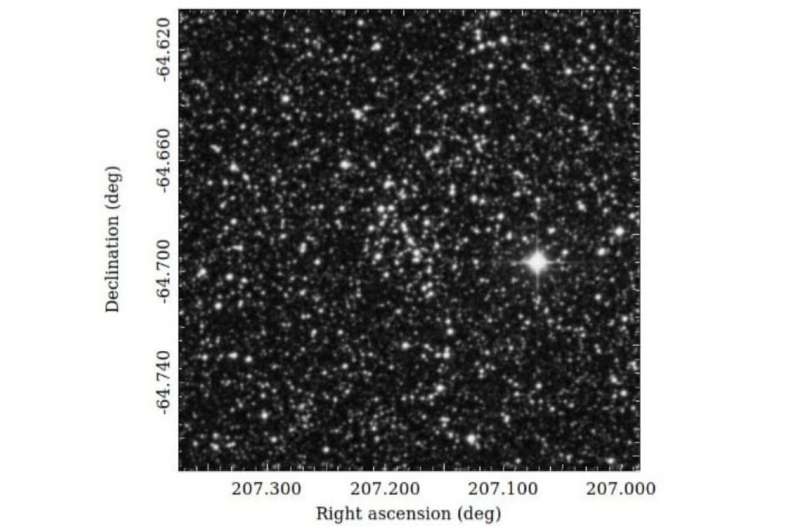May 23, 2023 report
This article has been reviewed according to Science X's editorial process and policies. Editors have highlighted the following attributes while ensuring the content's credibility:
fact-checked
preprint
trusted source
proofread
Open cluster NGC 5288 investigated in detail

By analyzing the data from ESA's Gaia satellite and from the Two Micron All Sky Survey (2MASS), Indian astronomers have investigated a galactic open cluster known as NGC 5288. Results of the study, published May 17 on the arXiv preprint server, yield important information regarding the properties of this cluster.
Open clusters (OCs), formed from the same giant molecular cloud, are groups of stars loosely gravitationally bound to one another. So far, more than 1,000 of them have been discovered in the Milky Way, and scientists are still looking for more, hoping to find a variety of these stellar groupings. Expanding the list of known galactic open clusters and studying them in detail could be crucial for improving our understanding of the formation and evolution of our galaxy.
Located some 7,000 light years away in the constellation Circinus, NGC 5288 (also known as Cr 278) is a galactic OC discovered in 1835. It is a rich, strongly absorbed cluster with a small but bright nucleus and a low-density extended corona. Although NGC 5288 has been known for nearly two centuries, it is a poorly studied cluster and there are still many discrepancies regarding its fundamental parameters.
Therefore, in order to shed more light on its properties, a team of astronomers led by Ritika Sethi of the Indian Institute of Science Education and Research in Berhampur, India, decided to inspect this cluster. "We have investigated a poorly studied open cluster, NGC 5288, using 2MASS and Gaia DR3 photometric and astrometric database," the researchers wrote in the paper.
The data allowed the team to calculate the membership probabilities of stars in the field of NGC 5288 and to identify 304 cluster members with membership probability greater than 50%. Furthermore, the astronomers estimated the fundamental properties of the cluster, investigated its structure, conducted a dynamical study and derived its galactic orbit and orbital parameters.
The study found that NGC 5288 is approximately 510 million years old and is located some 9,000 light years away, therefore farther than previously estimated. The mean proper motions of cluster members in right ascension and declination were calculated to be −3.84 and −1.934 mas per year, respectively. The interstellar reddening of NGC 5288 was estimated to be at a level of 0.45.
When it comes to the size of NGC 5288, the astronomers found that the core radius and the cluster radius are approximately 1.36 and 5.5 arcmins, respectively. The mass function slope for the cluster was found to be 1.39 for main-sequence (MS) stars (within the mass range 1.0–2.7 solar masses). The results also indicate that NGC 5288 is dynamically relaxed.
The researchers also integrated the orbits of the cluster for a time duration equal to the cluster's age. As a result, they found that NGC 5288 is born near the galactic disk and moves in a circular orbit with a very small scale height.
More information: Ritika Sethi et al, A deep study of open cluster NGC 5288 using photometric and astrometric data from Gaia DR3 and 2MASS, arXiv (2023). DOI: 10.48550/arxiv.2305.10099
Journal information: arXiv
© 2023 Science X Network





















